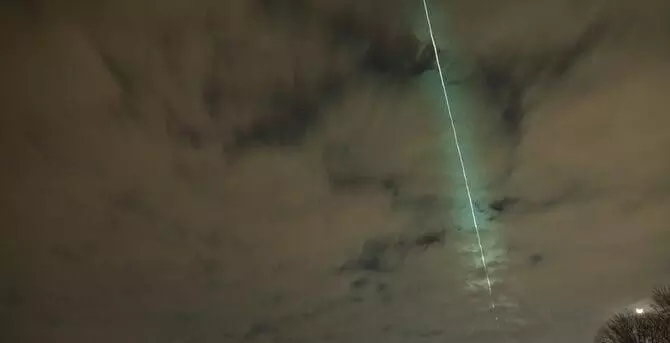
English Channel illuminated by "shooting star" asteroid
text_fieldsLondon: After lighting up the night sky in a burst of pink, an asteroid that erupted over northern France early on Monday morning astonished witnesses.
Just before 3 a.m. local time, the one-meter-long asteroid Sar2667 burned up in the mesosphere, the third layer of the earth's atmosphere, leaving hundreds of onlookers in awe.
The blast produced a "shooting star" effect that could be seen from the whole of southern England, most of southern Wales, and as far south as Paris, France.
Social media users posted videos of the occurrence and praised the shooting star that "lit up the sky with a pink light" as "spectacular."
Only seven times in recorded history has an asteroid impact been anticipated in advance—a phenomenon known as an "airburst."
On Sunday, the European Space Agency (ESA) tweeted the anticipated airburst timing. Krisztian Sarneczky, a geographer and asteroid hunter from Hungary, broke the news first, Arab News reported.
The forecast was described by ESA as “a sign of the rapid advancements in global asteroid detection capabilities.”
The asteroid would "safely strike" the Earth's atmosphere close to Rouen, France, according to the Meerkat ESA detecting system, producing a "fireball" effect.
Asteroids are stony objects that were left over from the early stages of the solar system's formation and are occasionally referred to as minor planets. They range in size from one to more than a thousand kilometres in diameter.
It is estimated that there are more asteroids orbiting the sun than the 1.1 million that have been found by authorities.
In November of last year, the last asteroid that was anticipated to impact Earth's atmosphere was spotted above Ontario, Canada.
The Sar2667 explosion was "special," according to physicist and airburst expert Mark Boslough because it was the first time a collision occurred "with enough warning to get data," even though incidents of this magnitude happen frequently.
It is especially pertinent for experts collecting data to more accurately forecast future asteroid collisions with the atmosphere of the Earth.
NASA revealed the results of an experiment testing a planetary defence strategy against near-Earth objects like asteroids in October.























